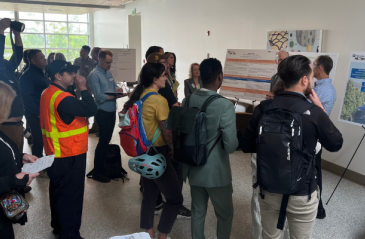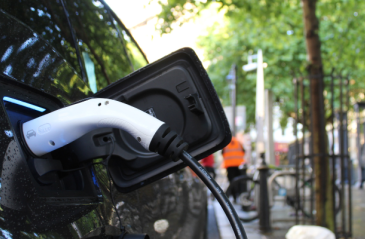
The information barriers holding back climate action and how to break them

Governments around the world are increasingly looking to deploy #blockchain. But what is it exactly? And how can it help?
Share article#Blockchain can reduce governments’ cost of operations and speed up public services. At the same time, it can also increase data security
Share articleWhen implementing #blockchain, governments should be transparent about its algorithms and ensure the applications reflect public value
Share articleWe put our vision for government into practice through learning partner projects that align with our values and help reimagine government so that it works for everyone.
In recent years, the emergence of bitcoin and other cryptocurrencies has prompted many a headline. While it raises a set of important policy questions, the technology that enabled these cryptocurrencies is just as intriguing. This technology is called blockchain.
Blockchain is just one of the applications of distributed ledger technologies (DLTs). A distributed ledger is a type of database that is spread across multiple sites in which any change of data requires the consensus of its participants.
At the moment, there are significant expectations surrounding the technology. Governments worldwide are betting on it to transform the way they do things. For example, Dubai has set a goal to have all government documents on blockchain by 2020. Other governments are investigating its potential use in central banking, e-voting, identity management, and registry management operations. DLTs are believed to have numerous advantages over existing solutions.
To begin with, DLTs can reduce governments' cost of operations and speed up public services by eliminating the need for intermediation. For example, smart contracts can be used to transfer ownership of a property, thus making a centralised property registry and its accompanying operations unnecessary. This could improve public services, free up significant resources used by intermediary institutions, and prevent corruption.
In addition, DLTs can increase data security and give citizens the ability to exercise control over their identity and privacy. For instance, blockchain offers a high degree of data immutability, which improves on existing auditing mechanisms by cryptographically securing and linking blocks of transactions. These are then are stored in a decentralised network. If they have access to this network, citizens can see their data, who accessed it and when, and what was done with it, thus providing them with the information they need to hold their government accountable. Additionally, DLTs can host a single digital identity, enabling transactions to take place across different asset classes (such as basic income and hard assets).
Furthermore, decentralisation, transparency and individual anonymity could allow governments to foster inclusiveness in elections and policymaking by using DLT-based e-voting and engagement tools.
But while DLT applications promise to do many things, their technological potential may be limited in a number of ways. DLTs are nothing more than a way of recording and storing transactions, so they do not automatically ensure that the same operation (e.g. a property transfer) actually happens in the real world - the way a traditional intermediary would do.
Similarly, some of the applications of DLT can be implemented using other more mature and potentially cheaper technologies. It may be simply too powerful for the task at hand. Its decentralised nature makes it difficult to scale up to higher capacity, while the use of more computing nodes for the verification of transactions may result in increased energy consumption. It may not deliver on its promise of inclusiveness, because government applications are unlikely to have the same level of incentives for distributed, mass collaboration which is the key enabler for bitcoin.
Even DLT's promise of data security and privacy has its limitations. DLTs are not immune to the risk of unauthorised capture. Blockchain applications have been vulnerable to attacks from crypto-mining devices that can gain control of more than half of the network. In such instances, they can control the inclusion of new blocks and rewrite the blockchain's history.
Compliance with privacy laws may require compromising the openness of distributed ledgers. For example, in an open blockchain all information is accessible to everyone (albeit in an encrypted form), which may be incompatible with the storage of sensitive personal data. To mitigate such threats, governments would need to restrict access and adapt their use of DLTs in a permissioned implementation.
Ultimately, DLT's potential is too great to ignore. Its promised decentralisation, data security, and privacy could help to improve public services and make them more affordable by reducing government's role as intermediary. The decentralised and transparent nature of DLT could enhance governments' own transparency, accountability and inclusiveness, enabling greater collaboration and integration with the private and social sectors.
However, there is no universal rulebook that specifies how and where DLTs should be deployed. Governments need to exercise scrutiny in assessing DLT's feasibility, only implementing it when the speed, security and privacy gains outweigh the societal costs. Governments have to govern, and when implementing DLT applications they must be transparent about the underlying algorithms and ensure that the applications genuinely reflect public values.











